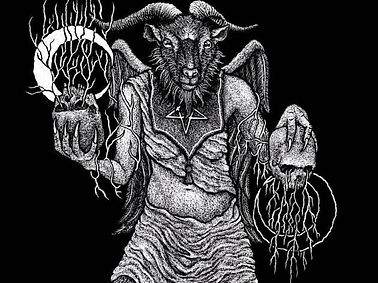Holidays
The holidays that Satanic Unity follows are from multiple sources

Unity Day
Varying dates
Unity Day in Satanic Unity occurs on the 13th day of every 13th month, focusing on Knowledge, Unity, and Altruism. This unconventional celebration aims to promote learning, community bonds, and acts of kindness. Knowledge Sharing is central, encouraging people to share skills and experiences through workshops, lectures, and online forums. This cultivates a platform for mutual learning, contributing to the community's collective wisdom. Community Service is emphasized, urging participants to engage in acts of kindness. Organizing events like volunteering at charities, coordinating food drives, or environmental clean-ups fosters a spirit of altruism and communal responsibility. The Feast of Sharing promotes communal meals, symbolizing unity and shared experiences. Participants come together to break bread, fostering a sense of community. Educational Events are crucial, encouraging activities that promote learning and intellectual growth. Panel discussions, book readings, and film screenings stimulate thoughtful discussions on diverse ideas. Unity Day in Satanic Unity is a day of camaraderie, and benevolence, showcasing the power of shared knowledge, the strength in unity, and the impact of selfless acts on the well-being of the community. Next few dates: - 13 September 2025 - 13 October 2026 - 13 November 2027 - 13 December 2028 - 13 January 2030
Lupercalia
15 February
Celebration of bodily autonomy, sexual liberation, and reproduction Lupercalia was an ancient Roman festival celebrated annually on February 15th. Its origins are believed to date back to pre-Roman times and were associated with fertility rites and the pastoral traditions of early Rome. The festival was dedicated to Lupercus, the Roman god of shepherds, and it also honored Faunus, the god of fertility. The main participants in Lupercalia were a group of priests known as the Luperci, who conducted rituals at the Lupercal, a cave on the Palatine Hill associated with the she-wolf that nursed Romulus and Remus, the legendary founders of Rome. The celebration typically began with the sacrifice of goats and a dog. The priests, after the sacrifice, would cut the hides of the sacrificed animals into strips, dip them in sacrificial blood, and then roam the streets of Rome, gently slapping women and crops with the strips. It was believed that this act would purify and promote fertility. One notable aspect of Lupercalia was the practice of a matchmaking lottery. Young men would draw the names of eligible women from a container, and the chosen pairs would be considered matched for the duration of the festival, and sometimes longer, often leading to marriages. While Lupercalia had pagan roots, it persisted for centuries even after the spread of Christianity. In the late 5th century, Pope Gelasius I replaced Lupercalia with the Feast of the Purification of the Virgin Mary, which later became the Christian feast of Candlemas. The customs and rituals of Lupercalia gradually faded with the decline of the Roman Empire, but echoes of its traditions can be seen in certain Valentine's Day customs. The connection between Lupercalia and Valentine's Day is complex and involves the Christian effort to replace pagan celebrations with Christian observances.


Hexennacht
30 April
Occasion honoring those who fell victim to superstition and pseudoscience, whether by witch hunt, Satanic panic, or other injustices "Hexennacht," or "Walpurgis Night," is a traditional European celebration observed on the night of April 30th. The origins of Hexennacht are intertwined with pagan and Christian traditions. The name "Walpurgis Night" comes from Saint Walpurga, an 8th-century English missionary. Her feast day is celebrated on May 1st, and the eve of that day became associated with the earlier pagan customs of celebrating the arrival of spring. Before Christianization, the Germanic and Celtic peoples celebrated the arrival of spring with festivals dedicated to fertility and the renewal of life. Bonfires were lit to ward off evil spirits and welcome the warmer season. Over time, as Christianity spread, these pagan festivities became blended with Christian elements. In Germanic folklore, Hexennacht is often associated with witches gathering to revel and perform rituals. The night was considered a time when the boundary between the earthly and supernatural realms was thin, allowing for increased mystical activity. The image of witches flying on broomsticks and engaging in supernatural activities became a part of the Hexennacht lore. Today, Hexennacht is celebrated in various ways across Europe. In some regions, people light bonfires, dance, and participate in traditional festivities. In Germany and other parts of Central Europe, it is a night of merriment and outdoor activities. While the connection to witchcraft has largely become symbolic, the celebration remains a cultural and historical observance, blending elements of ancient pagan traditions with later Christian influences. (edited)
Unveiling Day
25 July
Celebration of religious plurality and shedding archaic superstition A centerpiece of TST's religious movement and icon of modern Satanism, the Baphomet with Children statue was commissioned by The Satanic Temple in 2014 and created by Mark Porter with "respect for diversity and religious minorities" in mind. On July 25, 2015, The Satanic Temple unveiled Baphomet to a large crowd of devotees in Detroit, signaling the beginning of the new Satanic era. We observe this milestone in Satanic history by celebrating Unveiling Day.


Halloween
31 October
Halloween has ancient roots and has evolved over centuries. Its origins can be traced back to ancient Celtic festivals, particularly the Gaelic festival of Samhain. Samhain marked the end of the harvest season and the beginning of winter in Celtic Ireland, Scotland, and Wales. It was believed that during this time, the boundary between the living and the dead was thin, allowing spirits to pass through and roam the earth. People would light bonfires and wear costumes made of animal heads and skins during Samhain to ward off ghosts. The idea was to appease or mimic the spirits, providing protection from potential harm. Additionally, Druids, the Celtic priests, would conduct rituals during this time to communicate with the dead and make predictions about the future. When the Roman Empire conquered Celtic territories, their traditions merged with local customs, including Samhain. In the 8th century, Pope Gregory III designated November 1 as All Saints' Day to honor saints and martyrs. The night before became known as All Hallows' Eve, eventually evolving into Halloween. Over time, Halloween underwent further transformations. As Christianity spread, the association with the dead and pagan rituals diminished, and new customs emerged. In medieval times, "souling" became popular, where poor people would go door-to-door, offering prayers for the deceased in exchange for food. Irish and Scottish immigrants brought Halloween customs to the United States in the 19th century, and the holiday continued to evolve. Trick-or-treating, a practice where children go door-to-door asking for treats, became popular in the early 20th century. The commercialization of Halloween grew in the mid-20th century, and the holiday expanded globally. Today, Halloween is celebrated in various ways around the world, often involving costumes, decorations, parties, and the exchange of sweets. The modern celebration of Halloween has become a blend of cultural influences.
Sol Invictus
25 December
Celebration of being unconquered by superstition and consistent in the pursuit and sharing of knowledge Sol Invictus, meaning "Unconquered Sun" in Latin, was a god in the Roman Empire, gaining prominence in the 3rd century CE. Its worship likely emerged as Emperor Aurelian sought to unify diverse religious traditions. In 274 CE, Aurelian declared Sol Invictus the official patron and built a grand temple in Rome. Sol Invictus held significance tied to the solar calendar, especially the winter solstice. December 25th marked the "Natalis Solis Invicti" festival, symbolizing the sun's rebirth near the winter solstice. This date coincides with the later Christian celebration of Jesus Christ's birth. The association of December 25th with Sol Invictus is interesting, possibly indicating a strategic choice by Christians to align with existing pagan festivals, facilitating the conversion of pagans to Christianity. Despite its decline with the rise of Christianity, Sol Invictus' influence persists, seen in historical connections between pagan solar celebrations and the development of Christmas traditions.
